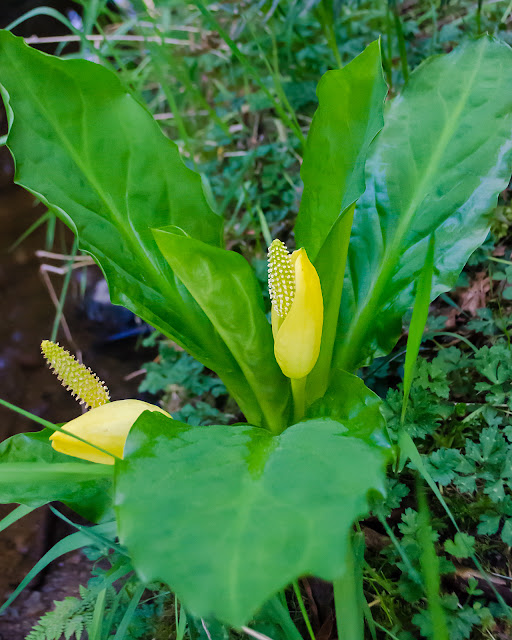As soon as the snow and ice have gone, at least in the lower areas, I start looking out for skunk cabbages. They're not quite the first sign of spring; the red alder catkins have been flowering since early February; so have the snowdrops in my garden , and now the crocuses are out, but the skunk cabbages are the first bright lights to enliven the dim understory.
These were hiding under the bank of the river a few days ago.
 |
| Lysichiton americanum, aka Swamp Lantern. |
 |
| The flowers appear before the leaves. |
 |
| The leaves, in a few weeks, will cover all this muddy area. They grow to 1.5 metres long. |
I looked up the dates of the first skunk cabbage sighting of each year since I arrived here in Campbell River. 8 springs. They showed up 4 years in April, twice at the end of March, and then, last year, really early, the third week in February. And this time, the 6th of March.
- Otro nombre común es "Linterna de los Pantanos".
- Las flores salen antes que las hojas.
- En unas pocas semanas las hojas cubrirán todo este sitio lodoso. Crecen hasta metro y medio de largo.




